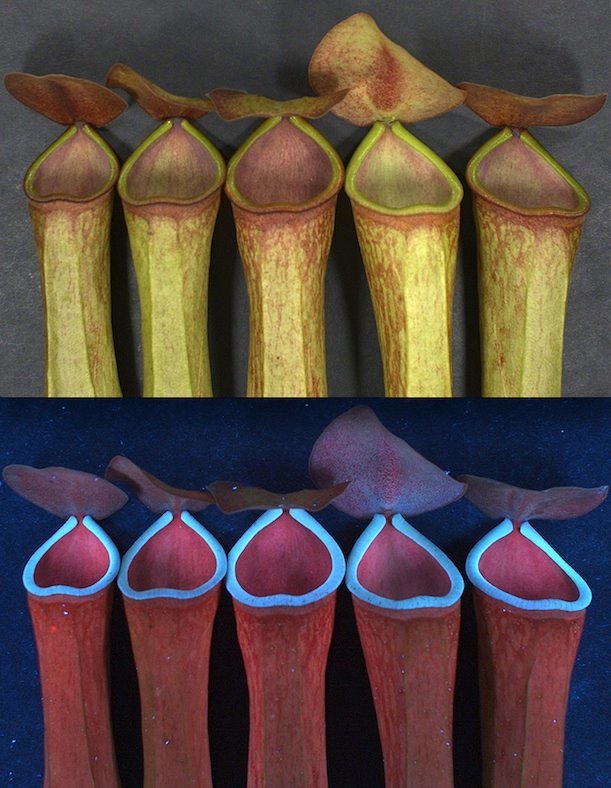These Carnivorous Plants Glow Under Ultraviolet Light to Attract Prey

Image : A row of pitcher plant species, Nepenthes khasiana, under normal light (top) and under UV light (bottom), revealing their alluring fluorescent emissions. All photos by Rajani Kurup, Anil John Johnson, Sreethu Sankar and Sabulal Baby.
It’s long been known that carnivorous plants lure their insect prey in a range of ways: irresistible nectars, vivid colors and alluring scents that range from rose to rotten flesh.
But recently, a group of scientists at the Jawaharlal Nehru Tropical Botanic Garden and Research Institute in India discovered a previously hidden means of beckoning among the most ruthless of greenery. Some carnivorous plants, they discovered, lure insects to their death with a fluorescent glow invisible to the human eye.
Easy Math Editor
This discussion board is a place to discuss our Daily Challenges and the math and science related to those challenges. Explanations are more than just a solution — they should explain the steps and thinking strategies that you used to obtain the solution. Comments should further the discussion of math and science.
When posting on Brilliant:
*italics*or_italics_**bold**or__bold__paragraph 1
paragraph 2
[example link](https://brilliant.org)> This is a quote# I indented these lines # 4 spaces, and now they show # up as a code block. print "hello world"\(...\)or\[...\]to ensure proper formatting.2 \times 32^{34}a_{i-1}\frac{2}{3}\sqrt{2}\sum_{i=1}^3\sin \theta\boxed{123}Comments
Reshared. I love carnivorous plants :)
True. Insects unlike others are adapted to see such fluorescent glow of plants under UV. These adaptations help bees to identify flowers during pollination.
Nice I used to have a pitcher plant...Too bad it lost its pitchers and then died >.<
new finding.
its kinda phototropus
I tried to grow my own pitcher plant, but it failed
gr8 discovery .........
How they hold insects for to consume?
Log in to reply
The pitcher has a tiny hair like structures which trap and hold the insects.
Are these fluorescent glow visible to insects then?
Log in to reply
Yeah to a few like honeybees, etc...